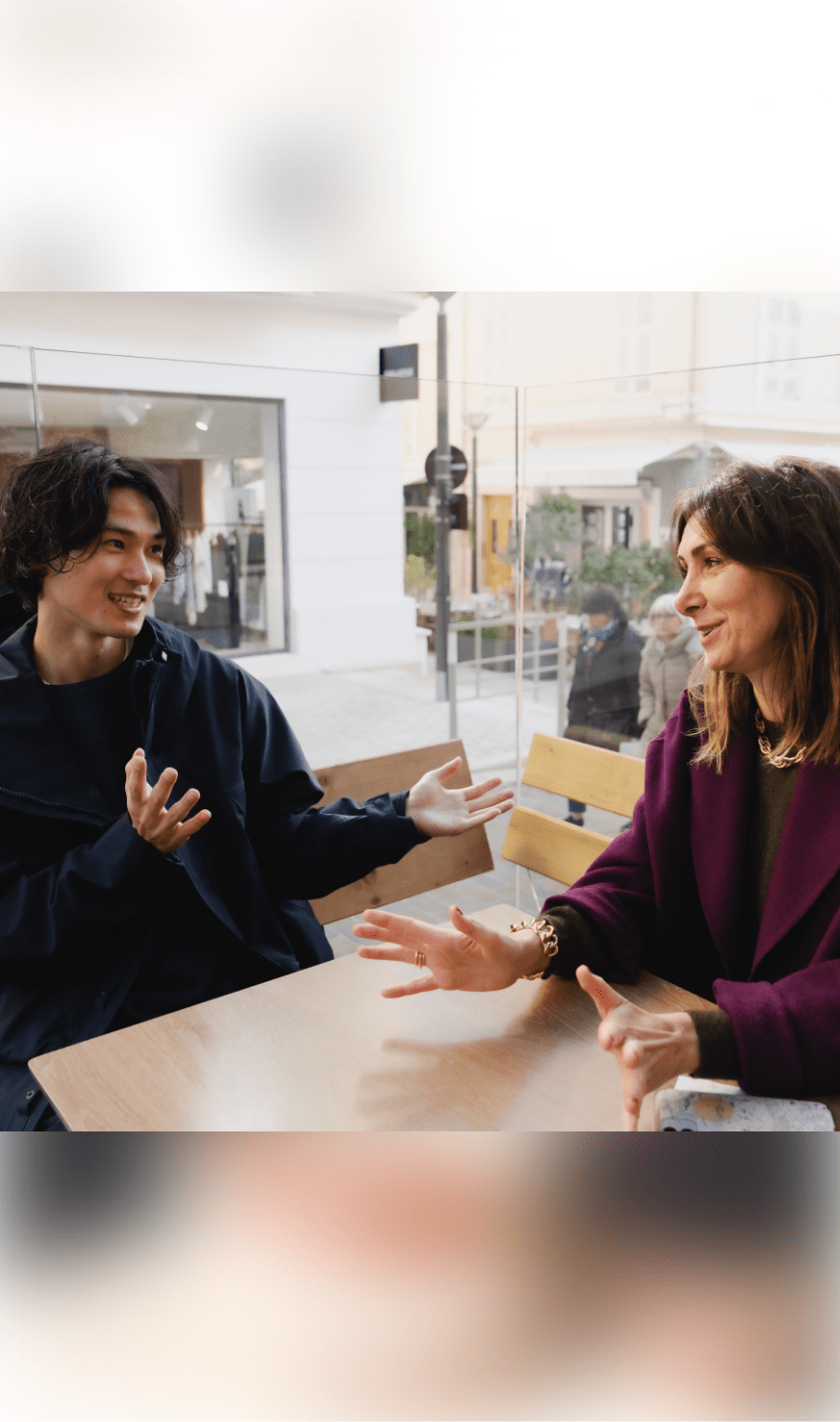


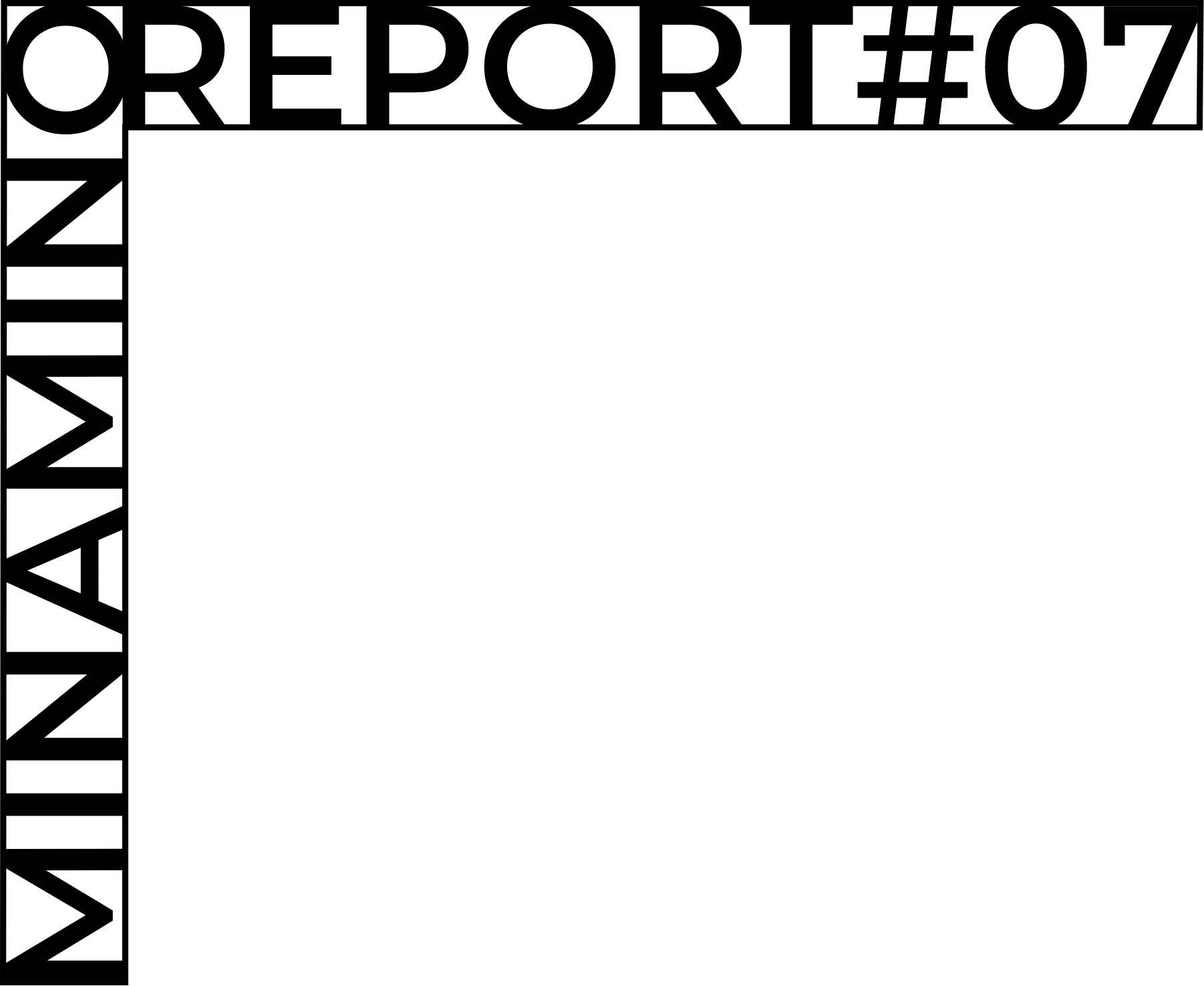

Takumi Minamino Experiences
a Sustainable Daily Life
that Blends into
the City of Monaco
Monaco is trying to evolve into an environmentally conscious, sustainable city while maintaining its allure as a luxury resort destination. At AS Monaco, the team that Minamino is a member of, the uniforms were made of environmentally friendly materials, reflecting their commitment to marine conservation.
※ The previous article is here.
Next, Minamino explores the city while experiencing and learning about Monaco's focus on sustainability in urban development and its sharing economy initiatives.
Reducing Packaging Waste Through Reusable Food Containers
As we drove down from the heights of AS Monaco's training ground to the center of Monaco, we saw the vibrant Condamine market (Marché). The market is bustling with fruits and vegetables lovingly grown by local farmers, as well as an extensive array of seafood from the Mediterranean Sea.
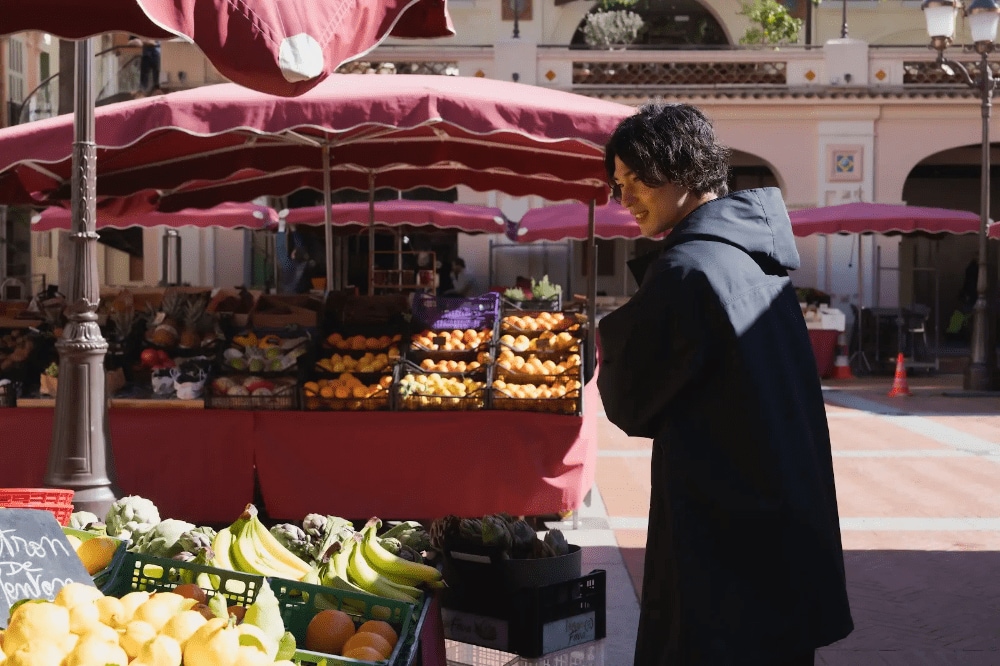
“Fruits bought at the Marché have a special taste you can’t get anywhere else,” Minamino remarks with a smile. The fruits, grown with great care and attention by local farmers, are rich in flavor with a freshness and high quality you can feel directly.
Walking through the town, we see an open and inviting hill road. Following that path, we find high-end stores lining the street, the entire area enveloped in an air of sophistication. However, even in the midst of all this, there are cafes dotted throughout where locals gather. It gives one a glimpse of how multifaceted the city is.
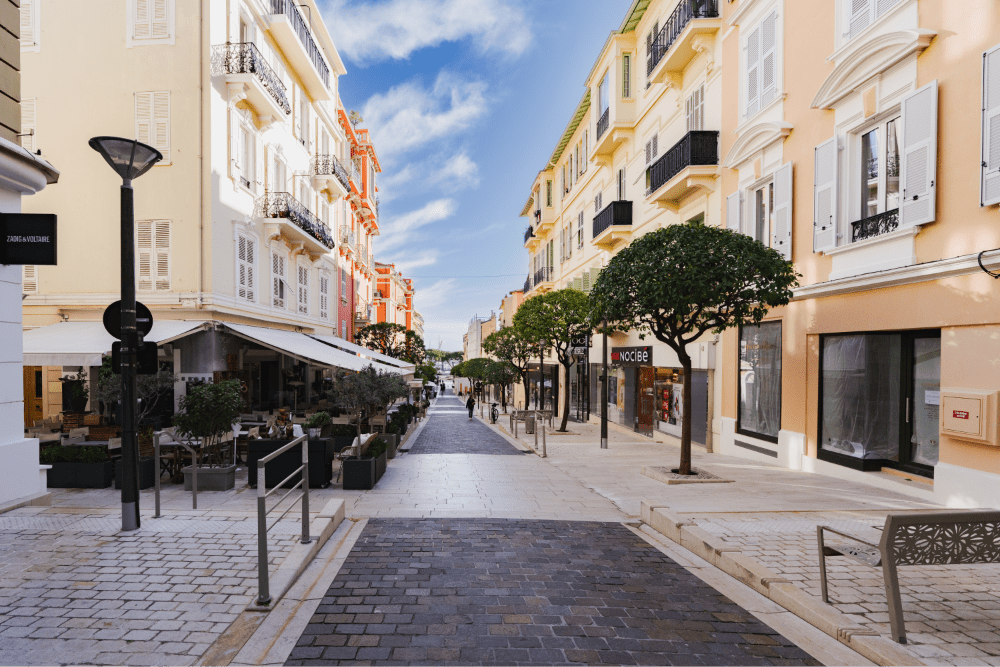
Particularly impressive are the benches set up overlooking the ocean. Benches are usually set up facing the street, but in Monaco, they offer a relaxing view of the sea. It gives one a sense of just how much the city values the beauty of nature.
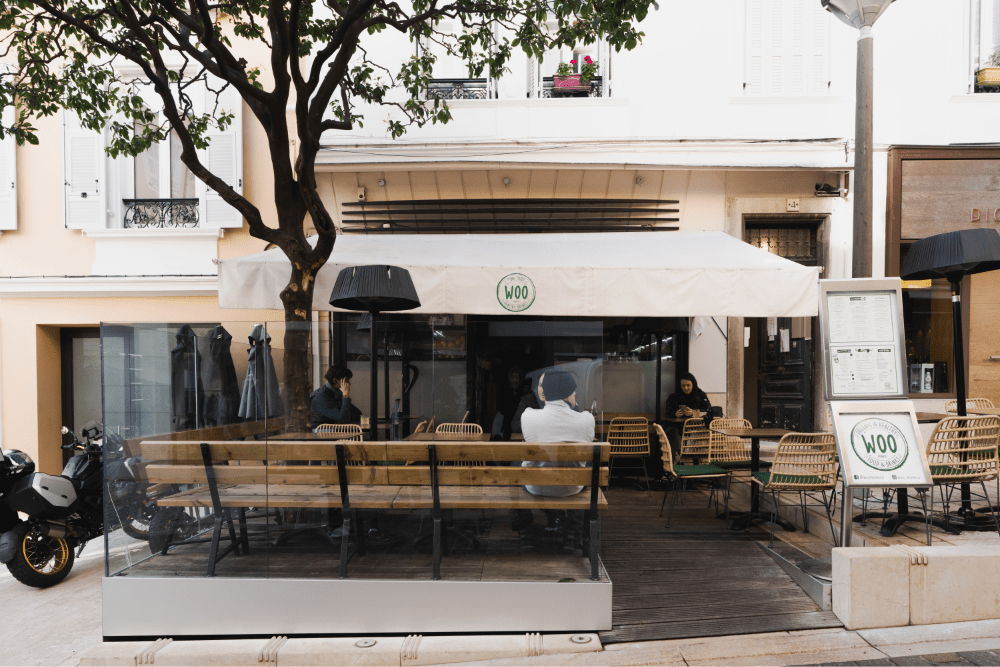
Next, we headed to the restaurant Woo Monaco, a personal favorite of Minamino’s. Here, too, sustainable practices are actually being implemented. Looking relaxed, Minamino told us about how he usually spends his time at the restaurant.
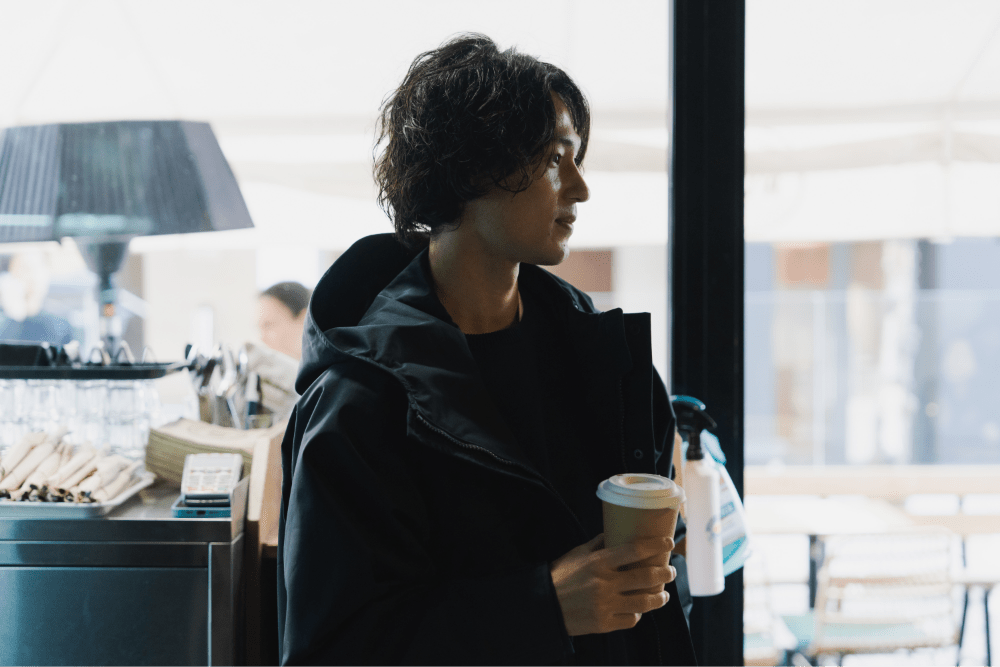
“I come to Woo Monaco at least once a week, three times if I can manage it. Its atmosphere as a cafe is wonderful too, and it’s perfect for breakfast on a day off. I especially like the pressed fruit juices. I like that they’re like detox water, good for your health, and an easy way to get all the nutrients an athlete needs. The use of only organic ingredients is another thing we value when being health conscious”
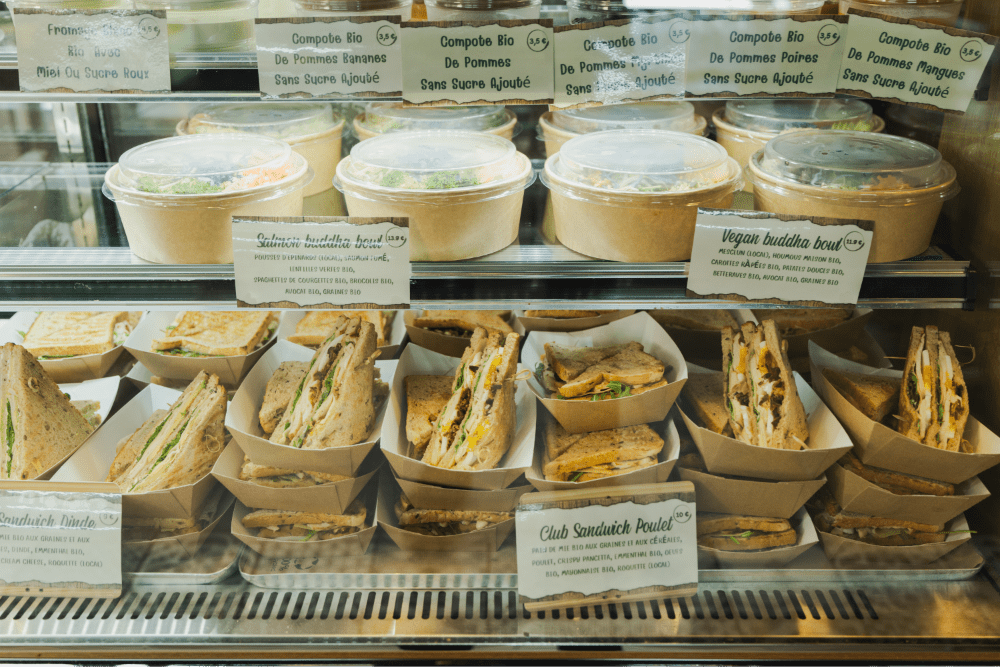
True to Minamino’s word, there are a variety of different sandwiches wrapped in eco-friendly paper packaging on display in the cafe. The top portion of the display features salads and fruits in containers with lids, and the label “Vegan buddha bowl” can be seen next to them. The label explained that this was a healthy meal for “vegans and non-vegans alike” filled with vegetables and grains.
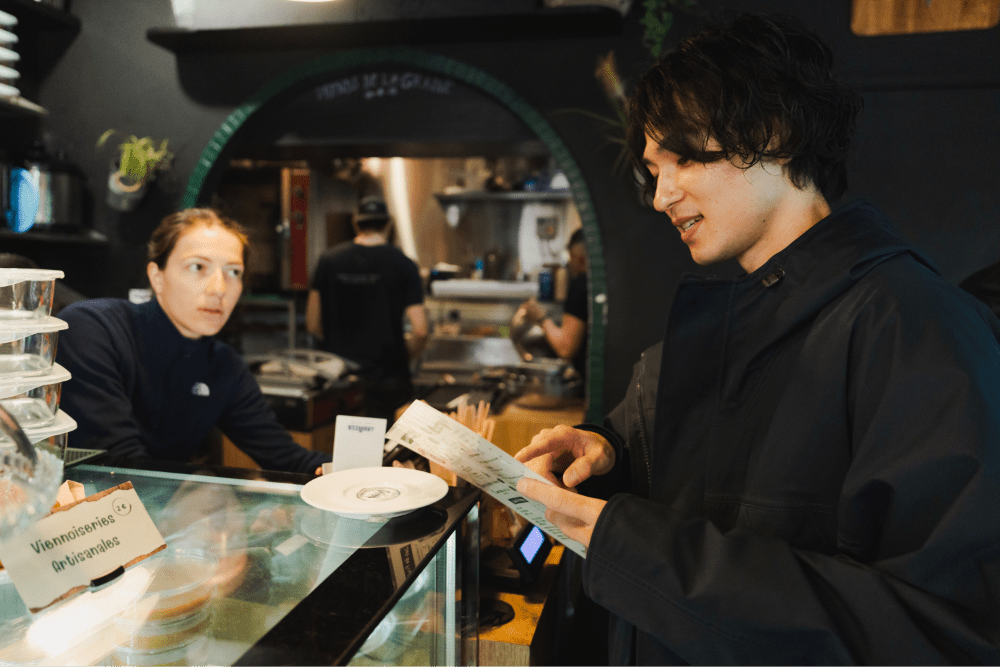
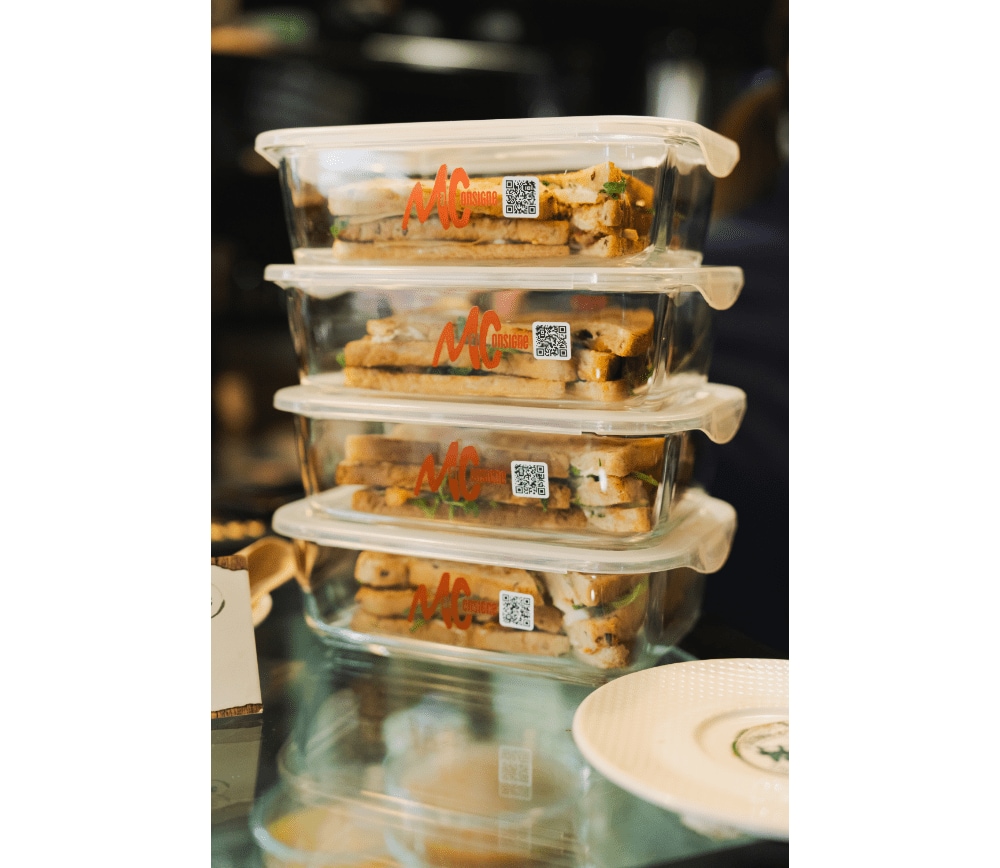
When Minamino ordered in fluent English, a sandwich in a clear container with a red logo and QR code stuck on it came out.
The staff told Minamino that this QR code is for a shared glassware system called “MaConsigne.” “I often see this name around, but I’m not sure what it actually is,” Minamino says, intrigued. Perhaps sensing this, MaConsigne member Laurence Nabeth thoughtfully explained this unique system to Minamino.
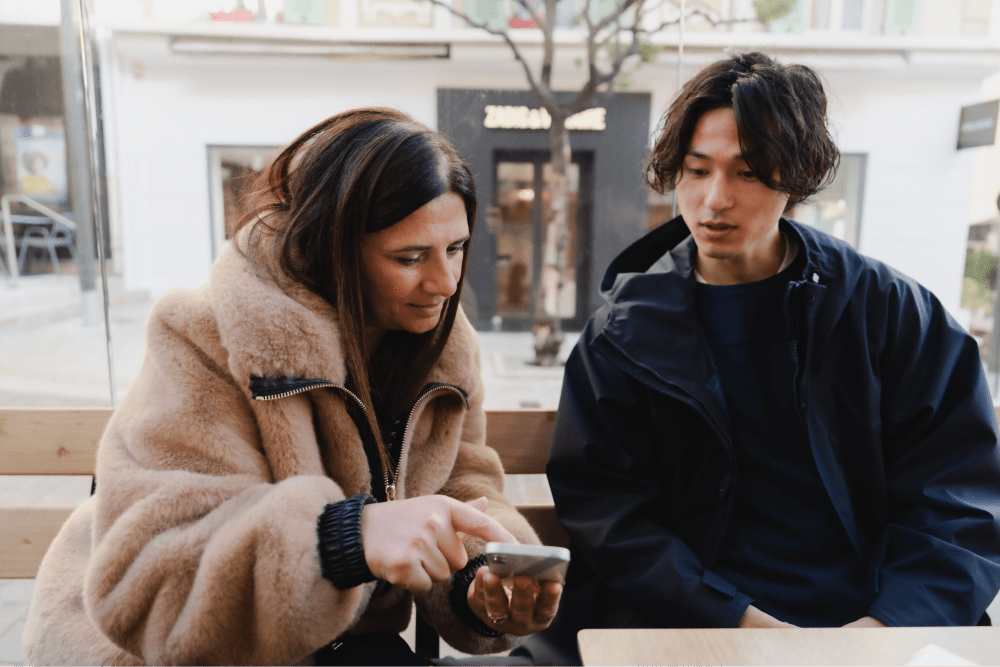
“MaConsigne is a food container reuse system started in June 2022 with the aim of reducing single-use container waste. It operates with the support of the Monaco government, and delivers clean containers to 38 partner restaurants every day from morning to late at night. It’s easy to use: the restaurant will place the food of your choice in these containers, and when you are finished with them, you simply return them to one of the 23 collectors located in the city within 14 days. All you have to do to use it is download the app beforehand and scan the QR code. It’s all free of charge”
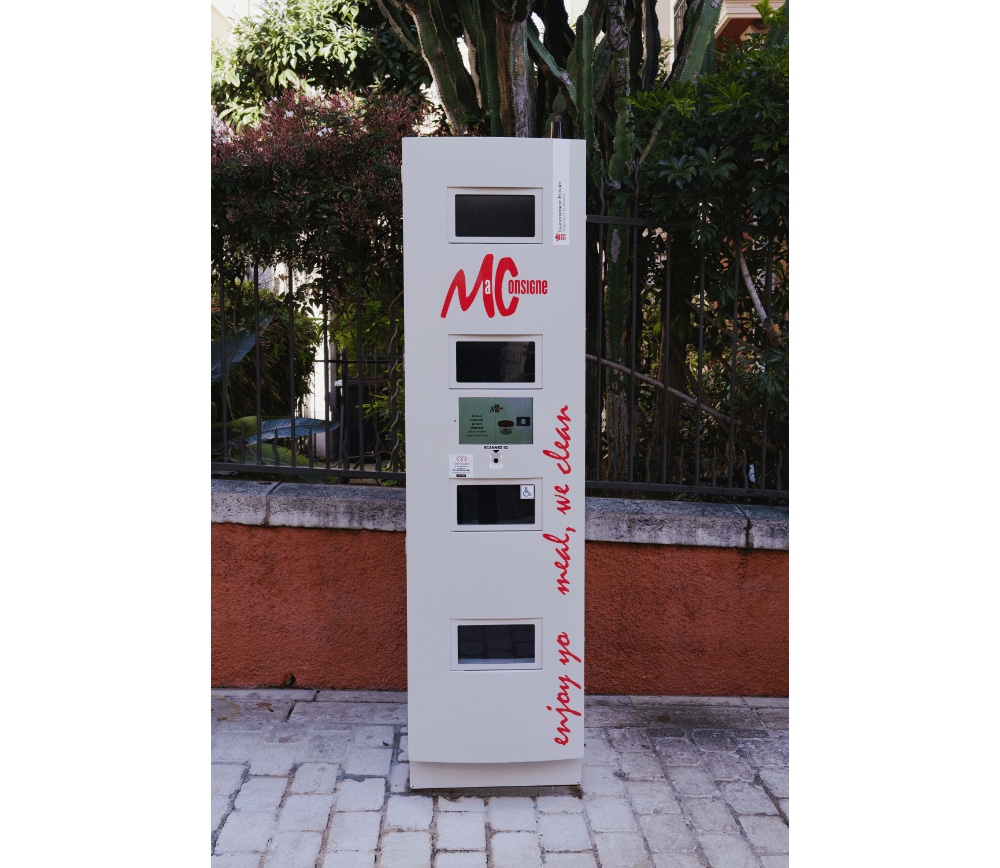
Minamino was amazed at the convenience and environmental friendliness of the system, replying with a smile, “It’s great that you don’t have to go all the way back to the restaurant.”
Laurence added that there is a map available on the app that lists the container collectors’ locations and restaurants.
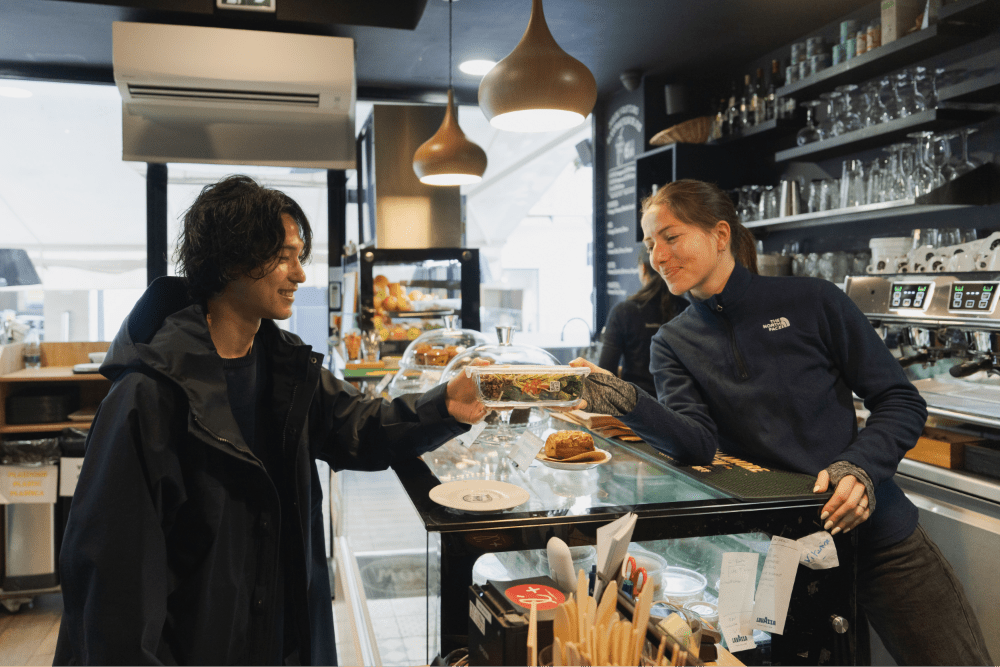
“When you want to eat a salad, if you let the restaurant know, they’ll put it in one of these containers for you. When returning it, you don’t need to wash it even if it is dirty. We collect all the containers at night, wash them thoroughly, and deliver them back to the restaurants the next morning”

“Sustainable life” means breaking away from the cycle of simply “create, use, and throw away” to “create, use, regenerate, re-make.” This concept goes beyond recycling and strives for a society in which the materials used themselves do not have a negative impact on the environment or ecosystem.
“With this system, we can reduce single-use plastics and have a positive impact on the environment,” Minamino says. It seems we can include environmental consideration into even the meal choices in our daily lives.
Monaco’s Environmental Consciousness Extends to Urban Transport
After lunch, Minamino went to meet up with Ms. Vanessa Tubino for a tour of Monaco.
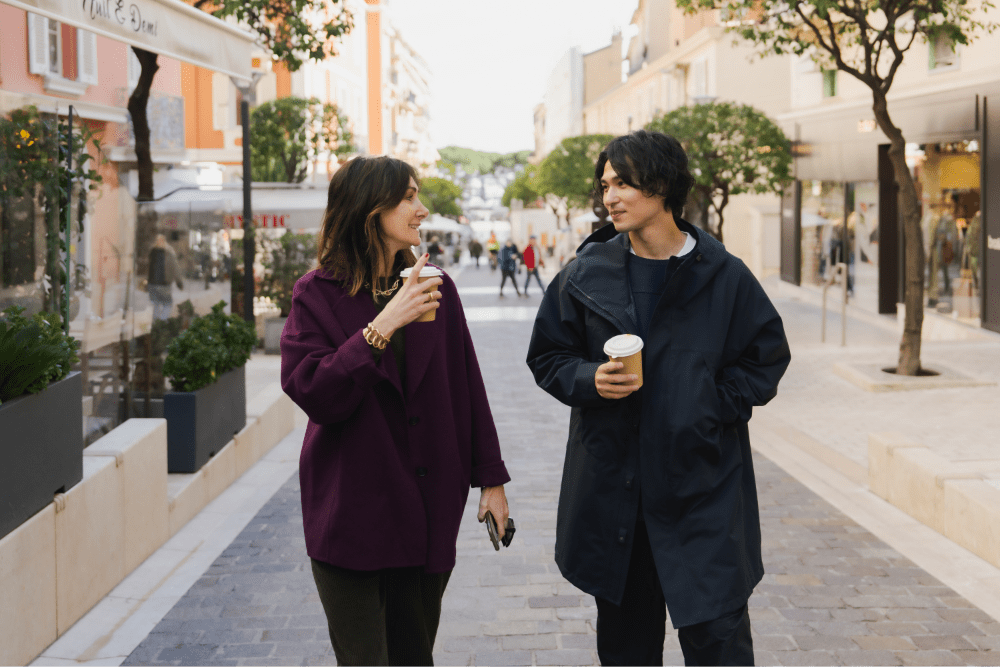
Vanessa is a financial professional who plays an important role in taking care of corporate accounting as an auditor. Her background is extensive, with several years of experience as an auditor for AS Monaco.
At the same time, she has shown a strong commitment to environmental protection, such as visiting the Arctic with Prince Albert II in 2022 to research global warming.
As the two of them strolled through the lively streets of Monaco, Vanessa asked “Do you know about Mobee?” Minamino answers, “I’ve seen it around, but I’ve never actually used it before.”
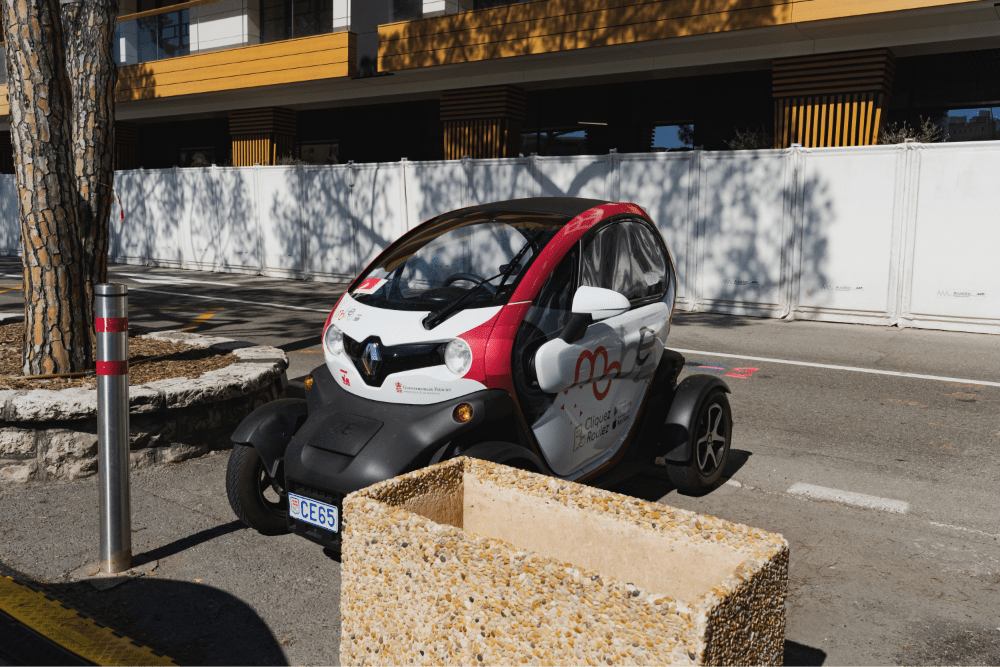
Mobee is an electric car-sharing service that allows users to travel freely anywhere within the Principality of Monaco. You can choose between a two-seater or five-seater car. This service allows users to reserve a car and even unlock its door via web or smartphone app. Some parents apparently also use it to take their children to and from extracurricular activities, as there are no restrictions on usage time.

“Mobee’s system is very convenient. It can be used easily in daily life, and since it is an electric vehicle share, it can also reduce CO2 emissions. You can see Monaco’s strong commitment to environmental protection” (Minamino)
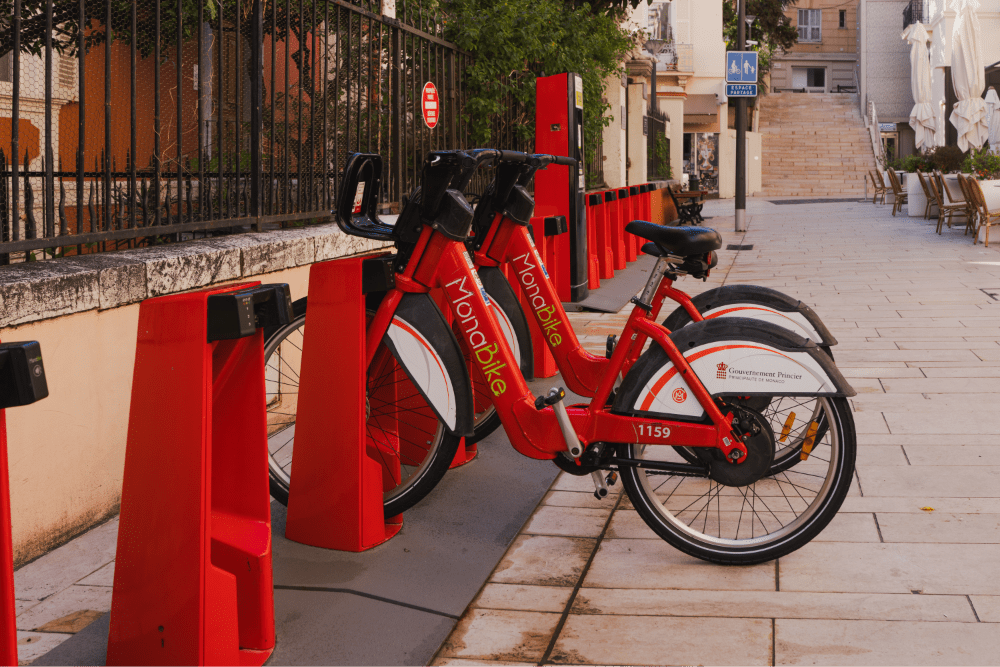
Vanessa also introduced us to a bicycle-share service called “MonaBike.” With this service, you can rent electric assist bicycles that charge using solar energy. With approximately 300 bicycles and 35 charging stations, anyone can easily explore the city.
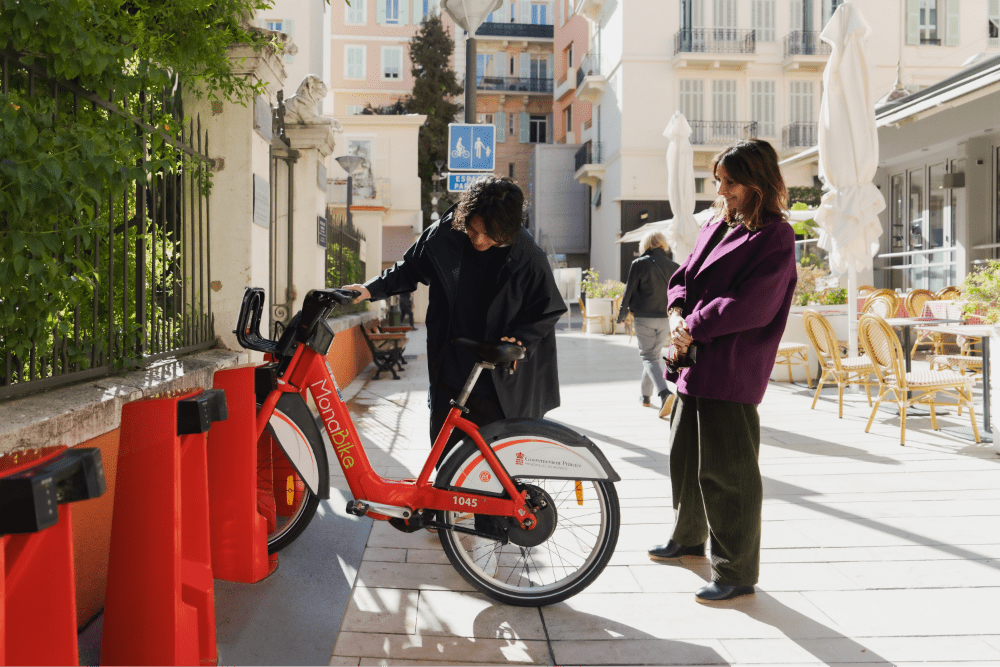
Minamino also highlights the advantages of MonaBike based on his own experience living in Monaco.
“Monaco is quite hilly, so electric bicycles with assist functions are very convenient for getting around. Since the city is compact, you can comfortably ride up the slopes on sunny days. The fact that you can easily pay via credit card is also great”
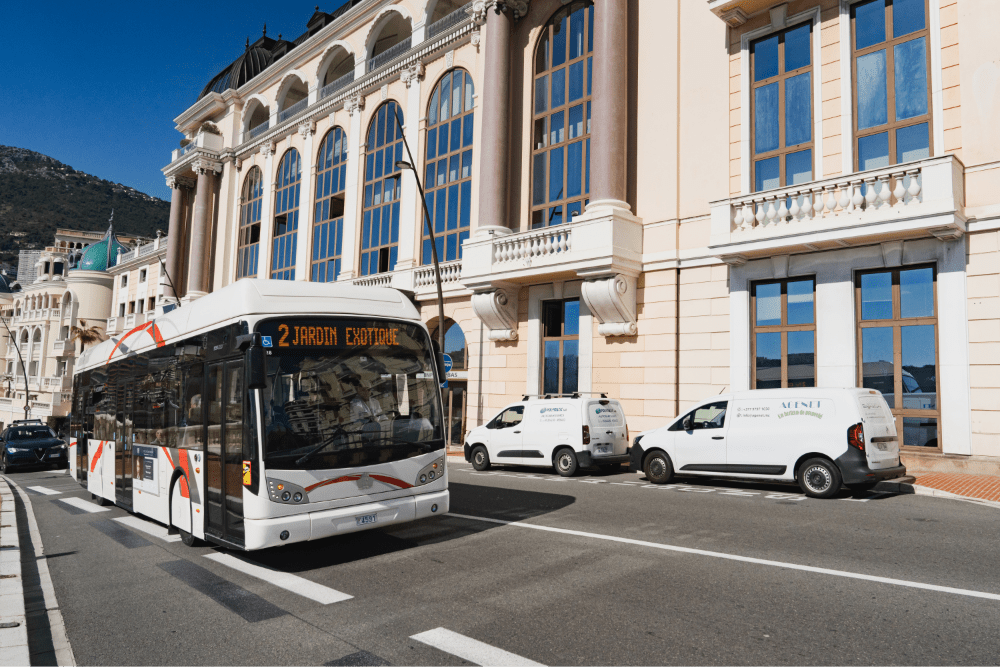
Walking around some more, we spot an environmentally friendly bus. The Monaco bus company uses biodiesel “Diester” to reduce greenhouse gas emissions.
Vanessa explains, “Some buses are already electric, and we plan to have all buses be electric by 2025.”
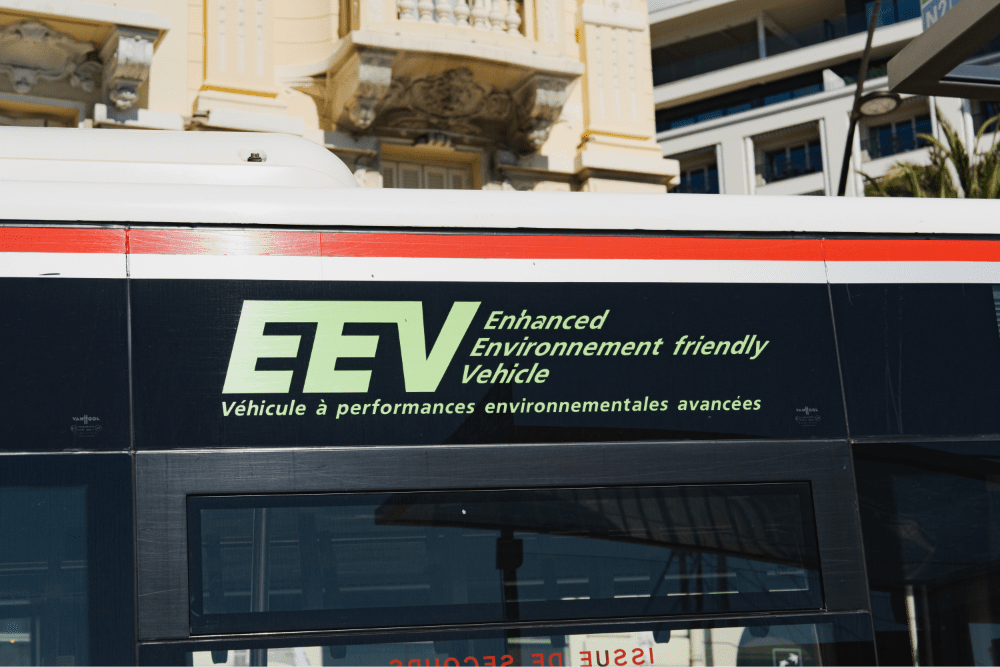
Pausing for a moment to look at a bus, we notice it is labeled “EEV.” “EEV” stands for “Enhanced Environment friendly Vehicle”, meaning a vehicle that is eco-friendly. In French, it is labeled as "Véhicule à performances environnementales avancées" (a vehicle with advanced environmental performance).
Minamino nods in acknowledgment of the high environmental awareness of Monaco’s urban transport.
From Recycling to Building Standards, Environmental Awareness is Everywhere in Daily Life
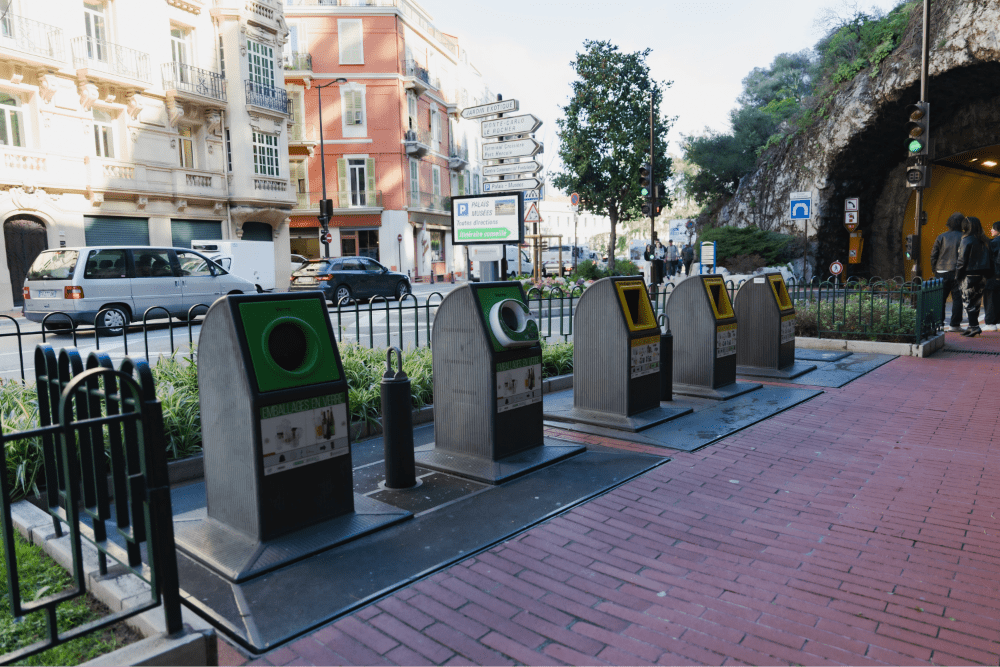
Walking around the city, one can see that high environmental awareness is deeply rooted in daily life, not just in vehicles. In public places, there are containers labeled “Verre” for recycling glassware and containers with yellow borders for separating household packing materials from paper products.

When Vanessa asked Minamino how he recycles at home, he replied, “I properly separate plastic, paper, and other materials.” Vanessa continued on, asking, “What happens to the waste after you separate it? Does your building have a dedicated disposal facility?” He explained, “Yes, there is a dedicated disposal facility, and the separated waste is properly processed there.”
While listening to his response, Vanessa explained the features of the waste collection boxes installed throughout the city.
These boxes have illustrations of specific glass products and paper packaging materials, which help tourists accurately separate their waste. Furthermore, these waste bins are directly connected to an underground system, which sends the waste directly to a processing plant.

Minamino is shocked at this system.
“You take your garbage directly underground?”
“That’s right. In older buildings, garbage is pre-sorted at home and then put into colorful communal garbage bins in the basement. These waste items are collected daily by dedicated trucks operated by public services. Meanwhile, colorful garbage bins throughout the city are directly connected to an underground system, sending waste directly to processing plants.”
Vanessa further told us that eco-certification is necessary for building construction in Monaco. She tells us that many buildings are currently under construction, and they must meet environmental standards.
“Meeting environmentally friendly standards is hugely important in Monaco. That’s why there are all kinds of measures here that focus on environmental protection”
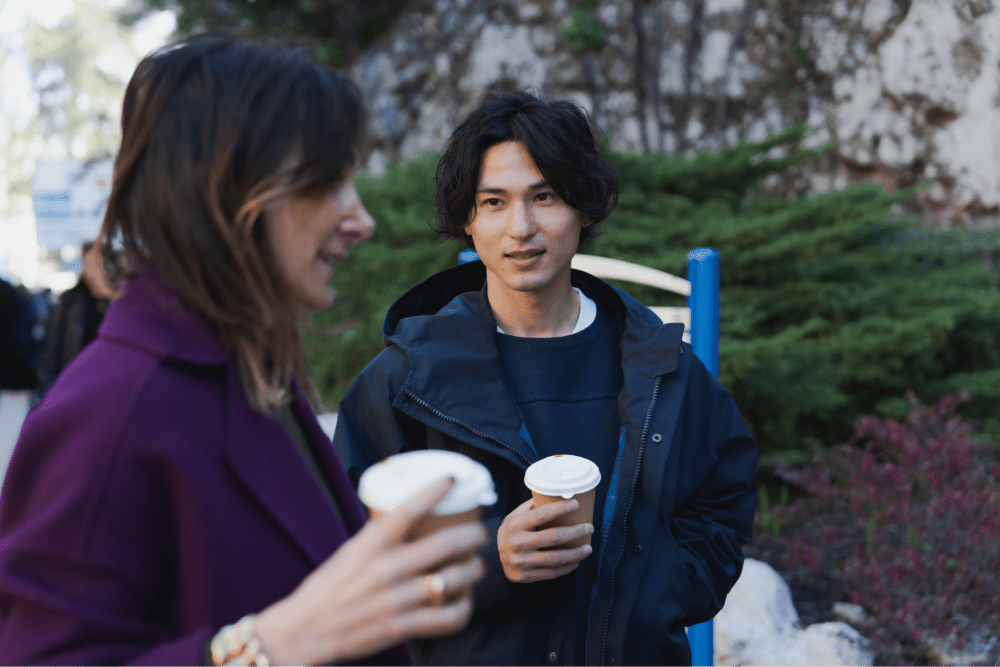
By engaging in dialogue while walking through the city, Minamino gained a deeper understanding of the sustainability initiatives that are a part of everyday life in Monaco. Having once again seen this high level of environmental awareness, Minamino’s own daily actions and messages will likely also change to be rooted in sustainability.

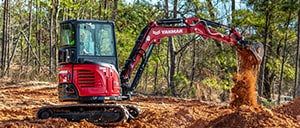 營造
營造
 海上商用
海上商用
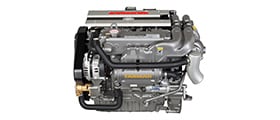 海上娛樂
海上娛樂
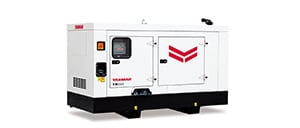 緊湊型電源產品
緊湊型電源產品
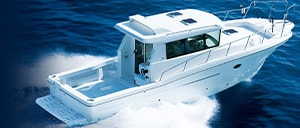 遊艇
遊艇